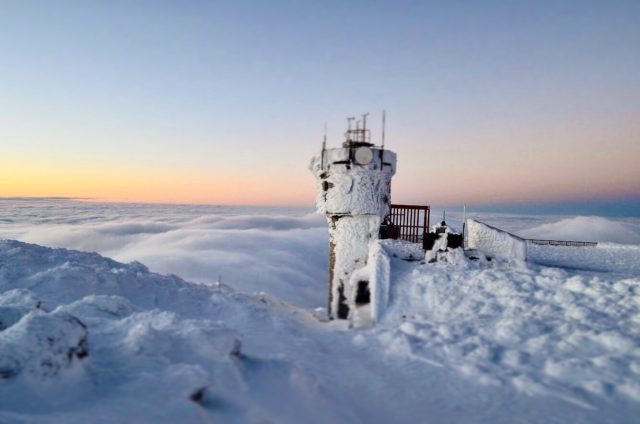
While many in New England are enjoying the start of Spring, Winter’s grip in the high peaks of the White Mountains remains firm. But, before it draws to an inevitable close, I thought it would be a good time to address a common query I have heard for months; “So, what do you do up there in the Winter?“.
The simple version is that the Mount Washington State Park Staff keep this place running.
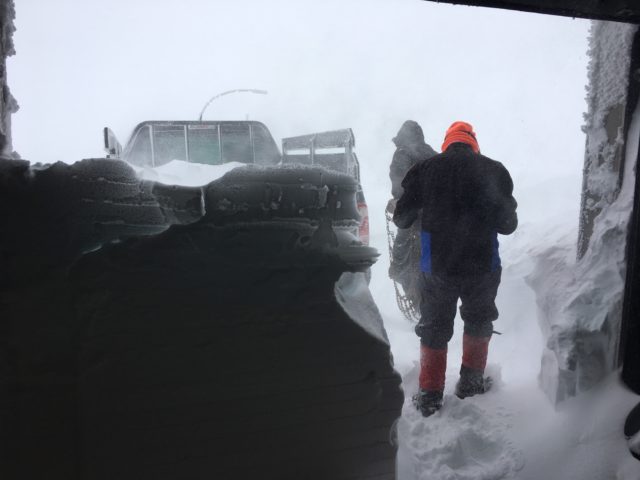
As the summit of Mount Washington is a State Park, it is our responsibility to our tenants and leasees, as well as the general public, that the grounds are maintained, the buildings are monitored, systems are operating, and repairs and improvements are occurring.
To do this requires our staff to be present up here 24 hours a day, 365 days a year. All of this is accomplished while still being prone to the extreme and dangerous weather, wind, and temperatures. Park Staff must take great care and precautions, planning accordingly daily to make sure we are safe while carrying out these duties.
The demands, challenges, schedules, and conditions of working at the summit of Mount Washington in Winter isn’t for everyone. But, for those of us that work year-round at this Park, it is a special time.
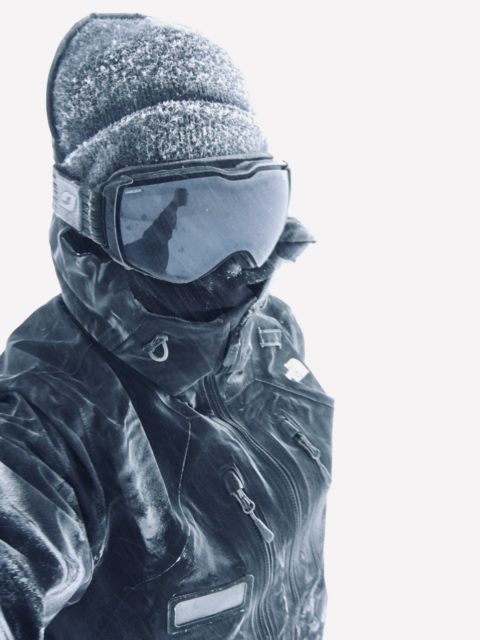
While commonly known that we have State Park facilities at the summit of Mount Washington, many people don’t think about some of the logistics of having a campus at the top of a mountain such as electricity, sewage, water, heat, and transportation.
All of these components are part of our Summer operations, but they also are necessary throughout the Winter, too.
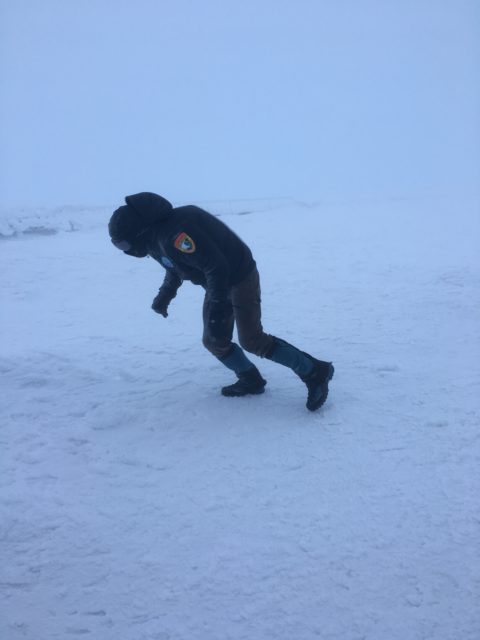
difficult and dangerous
Our tenants within the Mount Washington Observatory staff are well known to the general public as year round occupiers of the State Park facilities at the summit, but their staff is primarily focused on observing, recording, and reporting the weather and maintaining those instruments also in the same environmental challenges.
Behind the scenes, the Mount Washington State Park staff is hard at work making sure the systems are running smoothly, while also accomplishing off season improvements, repairs, and getting ready for the upcoming Summer season.
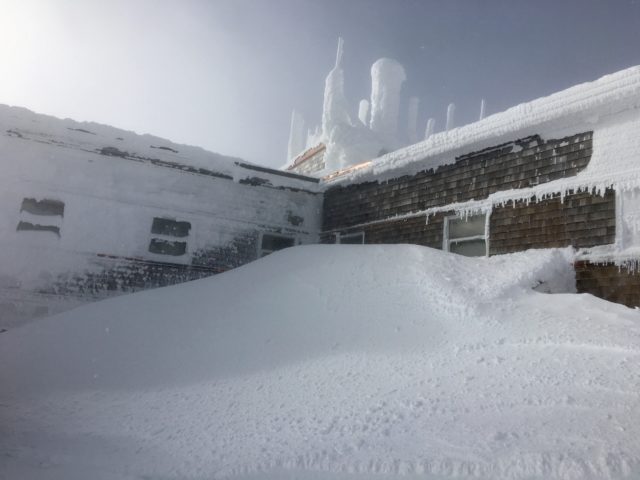
Typically working 2 people at a time, the Park Staff spend our entire work week at the summit in Winter, although weather can interrupt travel schedules. So, we are always prepared to spend extra days up here and it happens with some regularity. This Winter, some of us, myself included, had stretches of unplanned additional 3-4 days before being able to come down.
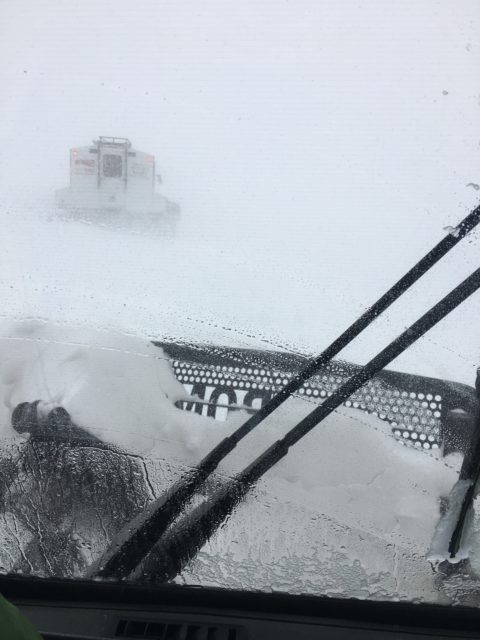
While there is very rarely a “typical” day, here are some of the things we do each day:
Days usually start with morning rounds: taking power meter and Sewage Treatment Plant readings, recording fuel and water storage levels, checking on the unoccupied buildings, communication antennas and dishes, and the outside grounds, clearing vents of any ice or rime that built up over night and we begin recording notes in daily work logs.
Afternoons can be a time of working on various carpentry, plumbing, shoveling, or additional projects if other needs don’t arise.
In the evenings, we might have some time to wind down and relax. But even in those times and overnight while asleep, we are always on standby and may be awakened at any hour by outage or other alarms, phone calls, or need to be responsive to weather related priorities.
The water supply at the summit is provided through a well and we pump the water into large interior storage tanks throughout the winter months. Heating fuel (kerosene) is pumped from outdoor storage tanks to the heated buildings. Levels of both are monitored and the storage tanks are pumped and filled and tracked not daily, but regularly, depending on usage. The sewage treatment plant, in a separate building at the summit, needs monitoring and attention throughout the day.
We provide water samples regularly throughout the year to the Department of Environmental Services.
While the buildings are closed to the public in Winter, entry ways still need to be kept clear of snow and accessible for staff and tenant use; especially emergency exits.
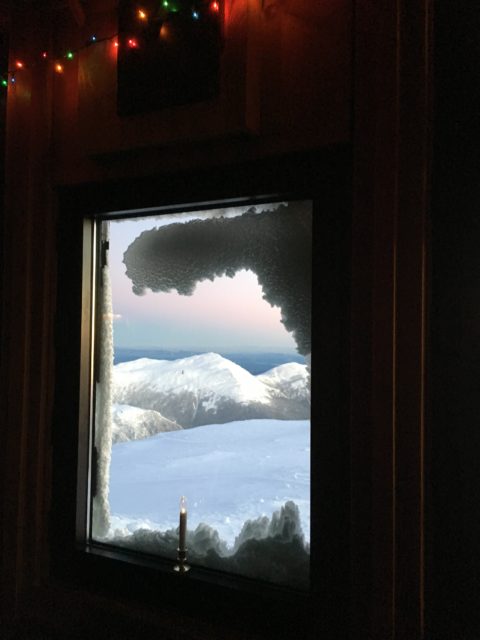
The summit campus is powered by electricity sent up through underground lines from the base. However, we are prone to losing power, for which we have back up generators to keep systems running. These industrial generators are checked daily, their exhaust vents are kept clear of ice routinely, and they are ensured that they are ready to fire and turn on at any moment.
If they kick on, there is another set of staff priorities for communicating with our electric provider about the outage and making sure we switch back to the grid with minimum interruption to our communication leasees.
Maintenance projects are completed throughout the Winter as time allows. Some are annual, like cleaning and organizing throughout the buildings, treating windows, floors, and painting surfaces as well as outdoor trail and directional signage normally displayed in the Summer.

Our Staff will often troubleshoot and do our best to help communication troubles with the entities and agencies that own and depend on the dishes and antennas at the summit. Often, we are on the phone with their staff to troubleshoot and get them back online if there are any interruptions. If we can’t restore service, they make arrangements with us to get their staff to the summit for repairs or replacing parts.

Winter transportation to and from the summit requires heavy machinery. Park Staff go up and down the mountain in our Bombardier SnowCat tractor. In addition to our own Staff and supplies, we provide transportation to contractors and leasees when needed and available, as well as equipment from time to time.
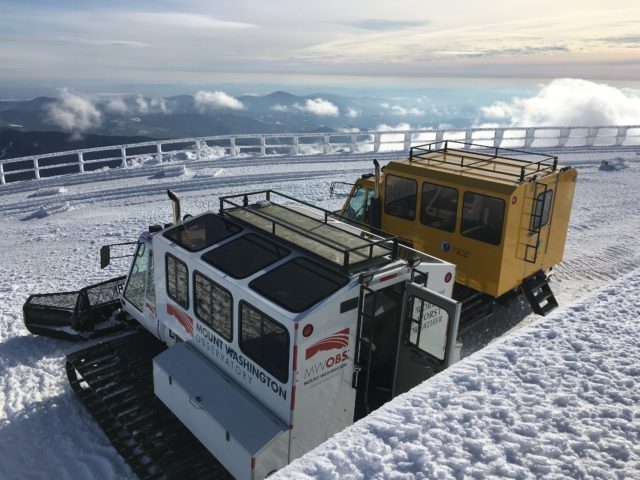
Part of running this machinery also includes plowing/opening the Auto Road, which takes time, skill, and practice to do correctly in very high snow drifts and extreme weather. The Mount Washington Observatory transports their staff and guests in a similar machine and we often work together and communicate regularly to make sure the Road is open and passable throughout the Winter for both of our staffs.
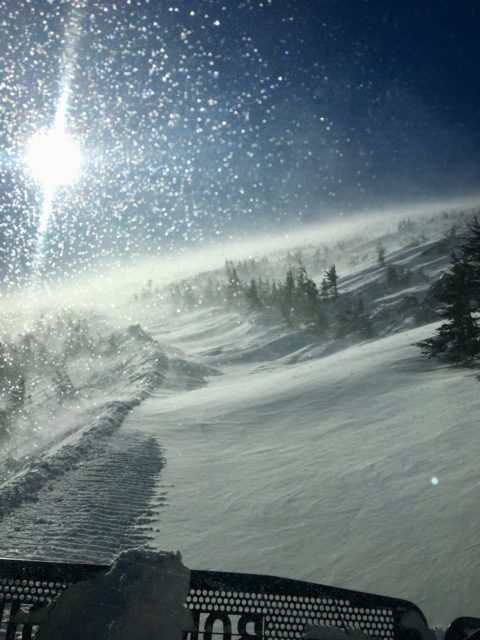
Mount Washington State Park is also an additional transportation resource for safety purposes. We will provide Winter rides and support as needed to local agencies and volunteer organizations pertaining to back country search and rescue responses as well as USFS Avalanche Rangers.
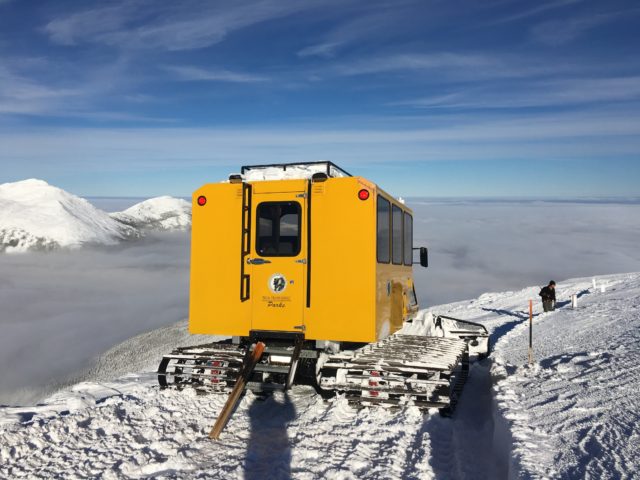
Non-routine things occur all the time. Furnaces and boilers need attention, pumps fail, the Sewage Treatment Plant has needed a lot of minor repairs this Winter, and other items and equipment break or malfunction (especially outside in high winds).
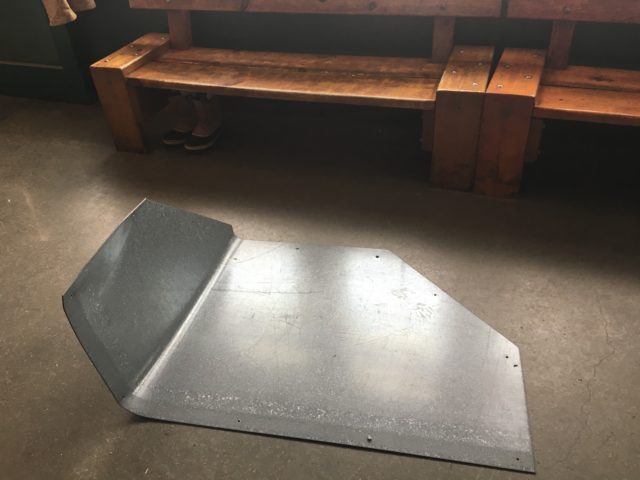
November to April is often the windiest time of year on Mount Washington. This season has not disappointed! February’s all time record was broken (171 mph on February 17) and we have experienced 43 days of 100 mph winds or greater with more of April to go.
We have also seen wind chills dip into the -70s more than once this Winter and hit -83 at one point in January.
However, aside from the danger the winds and extreme weather pose to our Staff, they also lead to unavoidable breaking of equipment and infrastructure. A high enough wind event can even trigger fire alarms or rattle and shake a few window latches and eventually push them open.
Other Winter challenges include drifting snow, heavy ice, doors freezing shut, ice and rime blowing off of antennas creating flying heavy projectiles, and dizzying white out conditions that can leave someone feeling completely lost not far out of our doors. Even while wearing spikes on our boots, the winds can be high enough to leave their bite into the ice insufficient enough to keep us upright or walking in a straight line.
A day or two of temporary thawing in Winter creates pools of water inside that need to be managed and sometimes pumped outside before they refreeze.
In January, the top section of an outdoor ladder broke off due to the extreme weather.
Beyond that, our 15 year old SnowCat has needed various maintenance and parts replaced this season as well.

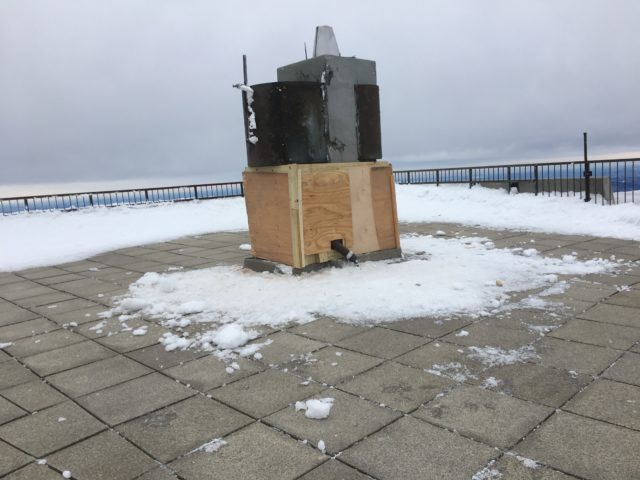
The Winter Park Crew especially is very dedicated to the success of the State Park and take a great deal of pride in what is accomplished up here. The summit has a lot of stakeholders and organizations counting on us to keep things running.
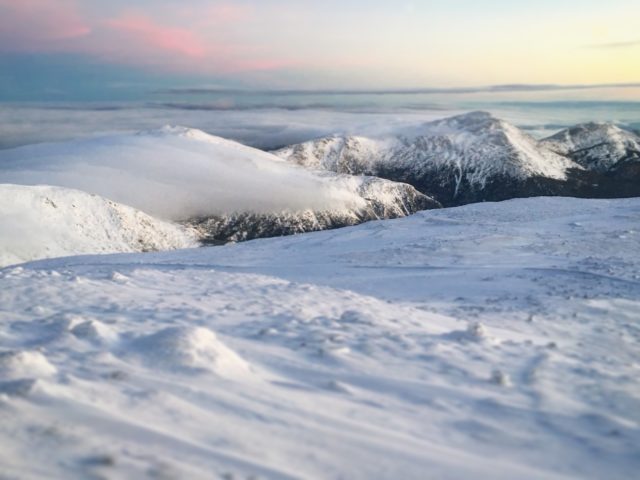
Even in the “quietest” time of the year, things up here are never boring! Winters at Mount Washington State Park are challenging and demanding. As one of our long time staffers, Chris Uggerholt, used to say, “All of this and a paycheck too.”

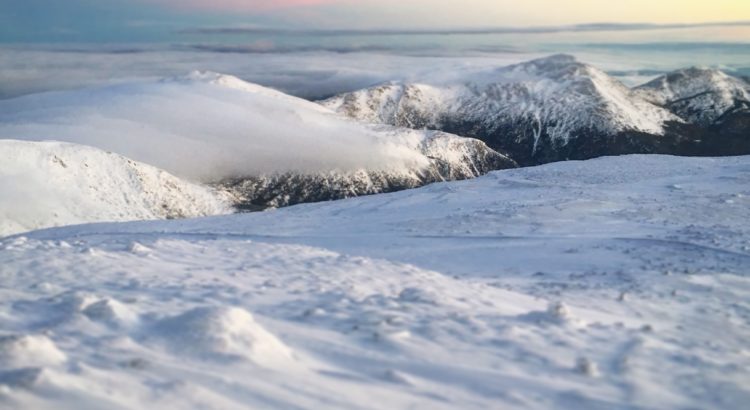
Great read Patrick..very informative & well explained..now I an even more impressed having you as a “house mate” as I was before!! See yah..
Spent a few years up there always enjoyable no mater what problem came up